




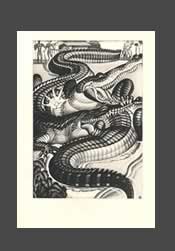
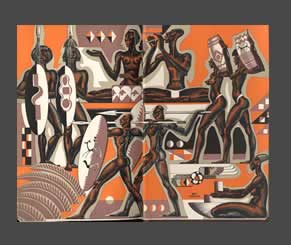

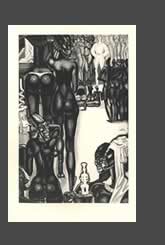
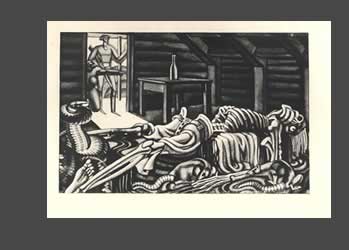

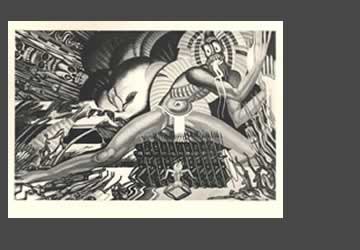



 |
 |
 |
 |
 |
||||||||
 |
||||||||||||
 |
 |
 |
||||||||||
 |
 |
 |
||||||||||
 |
 |
 |
||||||||||
Odd that an ostensibly authentic account of trade and the white man's ways in the Congo before 1900 should be given such a stylised treatment by Durenceau, an artist better known as a muralist and designer of patterns. Puleston's youth had been spent trading in the Congo, and he was suffciently informed to identify the literary productions of 'Trader' Horn as fictional conceits by a fantasist. In the selection of the plates above, Durenceau gives his interpretation of the dreadful fate of the White Trader who had been murdered in his ownbed, a fight between crocodiles and the appearence of the terrible God of the Witch Doctor. With all the lip smacking of the true sensationalist, Puleston talks about the White Man's Harem and the bevy of native beauties available. The dedication to Roger Casement it not coincidental. Offensive though many his descriptions are, Puleston has a skill at depicting ritual communications between fellow Europeans, the fights and absurd quarrels among the Traders, one of whom would regularly replace his glass eye from a large collection of spares he always carried with him. Durenceau's triumph is the endpaper design for the book, and the lavish title page which prepare the reader for the exotic feast within. |